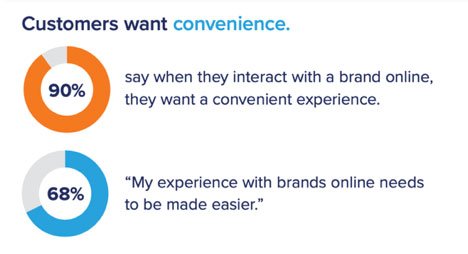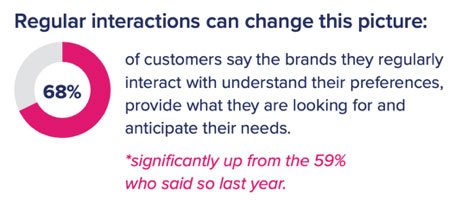Senior living SEO Best Practices
Originally published on 2/21/2020 and updated on 4/15/2025
The one constant about senior living SEO is change. But even among all the changes, certain SEO best practices continue to persist. Below, we highlight eight that will never go out of style.
1. WRITE Compelling Content for Humans First.
Yes, folks: quality content is still king. Because at the end of the day, all Google really cares about is keeping searchers happy. And by happy that means serving up exactly what that searcher is truly looking for. Google has gotten quite adept at understanding context and even nuance, and, of course, searchers have gotten incredibly granular with their search queries.
The words you use (or “keywords,” as we say) still matter, but what’s more important is providing excellent content that’s written in a natural way—content that will help people who are looking for a solution to that problem, such as . . .
- “How to pay for senior living communities”
- “Tips for choosing assisted living”
- “What’s the difference between assisted living and independent living”
We know many people are worried about AI Overviews dominating organic search results. You might think “why bother with SEO at all?” It’s true that we’ve entered the era of “zero click searches,” which is when people get the answer they’re looking for, right on the search engine results page (SERP) without having to click in further.
But that doesn’t mean you should throw out your entire senior living SEO strategy. Instead, adjust.
Optimize your website and blog content so that it can compete for those sweet visibility spots on the SERP:
- Featured snippets
- Knowledge panels
- People Also Ask boxes
- Local search queries (pay attention to your Google Business Profile)
Keep in mind that AI Overviews tend to dominate informational search queries. As of right now, commercial search queries are a different story.
For example, the keyword phrase “best senior living communities in Florida” has a monthly search volume of 30, and it suggests strong commercial intent. If you search the phrase, you won’t see any AI Overviews (precisely because it’s not an informational search or an “easy” question for AI to answer).
Instead, you’ll see the usual Google Local Pack, but beyond that, there’s an opportunity for a strong blog post to rank (over time) if it does a deep and honest dive into the topic. Maybe something along the lines of “What the Best Senior Living Communities in Florida Have in Common.” Or “An Overview of the Best Senior Living Communities in Florida – By Budget.”
Bottom line: Continue to optimize content for greater visibility on the SERP while also creating content around commercial search queries. The latter typically have lower search volume and less competition, but they also stand a chance of ranking since they aren’t competing with AI Overviews.
2. WRITE Compelling Content that’s DIFFERENT from Your Competitors’ Sites.
You want to provide thorough, helpful content. But you also want to provide content no one can find anywhere else. The biggest mistake we see in our industry is this: too many senior living community websites sound exactly the same.
Here’s the thing: we are essentially selling the same product/service, right? There are just so many ways senior living marketing teams can talk about “exercise tips for people over 70” or “10 considerations when choosing a senior living community.” Still, if you want your site to stand out—to people AND Google—you need to write about things in a way that captures the essence and spirit of YOUR community.
So perhaps you have a Q&A blog post with your community’s sales director, and you ask him/her to answer specific questions regarding paying for senior living. Or maybe you interview the community’s dining director about the five most popular meals at the community and why he or she thinks they’re great—and then you follow it up by interviewing some residents with their thoughts.
And regarding that topic about exercise tips for people over 70? Maybe you make a video with the activities director performing five different chair exercises. You use the content on the blog, on social media, and YouTube. Over time, as more people come to the blog post and share it, Google will “understand” that this is worthwhile content about exercise tips for people over 70, which will bring in even more traffic and help build site authority.
The topics might be similar to topics your competitors are doing, but you’re covering them in a completely original and interesting way. THIS is the type of content that “wins” over Google in the long run.
3. Embrace Speed, Baby!
People have ZERO patience for a slow site. Don’t make it easy for people to go to a competitor’s site simply because yours takes too long to load. A good web developer can test page speed and identify where and how to lighten the load.
4. Pay attention to Site Security.
Your site must be secure, full stop. In addition to using https, not http, make sure you have a transparent privacy policy and terms and conditions and that you’re in compliance with all relevant laws related to data collection.
5. always check Mobile Responsiveness.
Google Google uses mobile responsiveness as a ranking signal. So you need to make sure your site is mobile-friendly, which it should be anyway, since more and more people conduct searches on tablets and phones.
6. treat your google business profile like a second website.
If people search on “senior living communities near me,” Google Business Profiles surface to the top right. You must claim these listings and treat them like mini websites. Make sure they’re on brand, up to date, and have the most important content that someone would be looking for.
Check out these marketing tips for Google Business Profiles.
7. include Listings on Other Sites with Authority.
Certain directory listings carry authority in Google’s eyes, so having listings on these sites can be helpful in building your own site’s authority. Don’t stress and worry that your senior living website will be doomed if you miss one or two listings, however. Do your best, keep it on your radar for review (so you can be aware of any new sites that become important), and keep going. Psst. We can help with this.
8. Oldies, But Goodies.
It still makes sense to follow these long-standing SEO best practices:
- Keyword-rich title tags. Title tags are HTML elements that specify the title of a web page. They show up as the clickable headline on search engine result pages (SERPs). Try to keep your title tag under 60 characters for optimal display. Ideally, it should include a keyword phrase that expressly indicates what the page is talking about.
- Meta description: This is the snippet of text that typically shows up on SERPs under the title tag. Try to keep these under 150 characters and think of it as a little mini ad for the page. Make it enticing so people will click.
- Internal links: Pay attention to keyword phrases that you use naturally in the page that lead to other topics you’ve written about on your site. Hyperlink those words (called “anchor text”) and link to the corresponding content.
- Bullets and bolding. Google likes good formatting. Including bold keyword-rich sub-headlines and bulleted/numbered lists for easier skimming/reading. (Just like we did here!)
BONUS: Get Help from Experts in SEO and Senior Living!
Here’s the thing: you will never be “done” with senior living community SEO. It’s an ongoing task. And sometimes you’re so busy doing marketing and sales that some of these SEO best practices can fall by the wayside. That’s why it makes sense to work with an SEO expert from time to time, just to make sure your site is in tip-top shape. And bonus points if the SEO expert has experience in senior living.
Well, look at that. We just described . . . us! We’d love to chat with you about your SEO needs.










